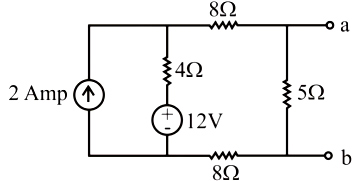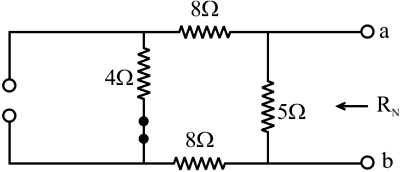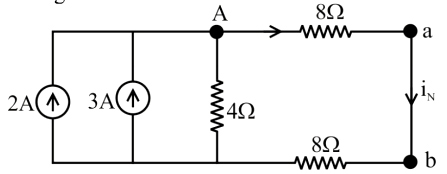Find Norton equivalent resistance, RN, and equivalent current source, in, at terminals a and b of the circuit.
Right Answer is:
RN = 4 Ω, iN = 1 A
SOLUTION
For Norton resistance, replace the sources with their internal resistance.
The voltage source is replaced by short-circuited and the current source is replaced by open-circuited.
Then finding the equivalent resistance across terminals ab
Resistance 8Ω, 4Ω & 8Ω are connected in series
R = (8 + 4 + 8) = 20Ω
Finally, 20Ω is parallel with 5Ω
Req = RN = Rth = 20||5
Req = (20 × 5)/(20 + 5)
Req = 4Ω
For finding the Norton current, a-b terminals are shorted and therefore the 5-ohm resistor is eliminated and converting voltage source into the current source.
Total current = 2A + 3 A = 5A
Applying the current divider rule
IN = (4 × 5)/(4 + 8 + 8)
IN = 1 A



